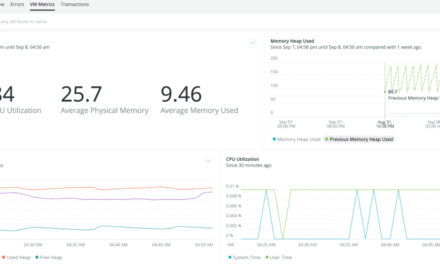Testing visual elements on your website can offer valuable insights into your User Experience (UX). If you don’t check your site on a regular basis, you might overlook bugs and other design issues that could harm your business.
Fortunately, you can easily troubleshoot your site with visual regression testing. This will help you identify any development changes that have impacted the User Interface (UI) on your website. This way, you can ensure that your site remains easy to use and navigate.
In this post, we’ll explain what visual regression testing is and how your website can benefit from it. Then, we’ll show you how to implement this troubleshooting method. Let’s get started!
An Introduction to Visual Regression Testing
Regression testing is an important part of web development. After making updates or changes, you’ll need to verify that everything continues to function properly. Along with checking a site’s functionality, you can also conduct visual tests.
Any change to your site can affect its front-end design. For instance, you may decide to add a new plugin, which can inadvertently alter the way the site looks to visitors.
Using visual regression testing, you can immediately identify any defects in your design. This process involves taking pictures of your web pages and noting any recent changes.
Visual regression testing will display a ‘before’ and ‘after’ screenshot of your WordPress website. If you perform this manually, you can check for visual differences yourself. However, these changes may be so small that only automated tools are able to catch them.
Types of Visual Regression Testing
Now that you know the basics of visual regression testing, let’s discuss how it works. Here are the various methods you can use to test a site’s visuals:
- Manual visual testing. This method involves manually scanning pages to find any visual defects. It can be less accurate due to human error and usually takes much more time.
- Pixel-by-pixel comparison. This process involves analyzing two images at the pixel level, which can flag issues that are invisible to the naked eye. It may also lead to false positives that don’t really impact the site’s usability, such as padding or margin differences.
- DOM-based comparison: This will note any changes to the Document Object Model (DOM) after an update. Although it doesn’t involve a visual comparison, it can identify any code that negatively affects the DOM.
- Visual AI comparison: This uses visual artificial intelligence to view the website similarly to the human eye. It can draw attention to noticeable visual differences.
Ultimately, it can be more efficient to use an automated visual regression testing tool. This can help you spot subtle differences in your UI, which you might otherwise miss.
How Your WordPress Website Can Benefit from Visual Regression Testing
If you’ve never heard of visual regression testing, you’re probably wondering how it can benefit your website. Let’s dive into the main advantages of this test.
1. Avoid Publishing Live Bugs
Visual regression testing is often an important step in identifying visual bugs on your website. Although everything may seem functional, there could be a problem on the front end. Depending on the issue, this could prevent users from seeing certain elements and clicking on them.
Here are a few common WordPress problems that could occur on your website:
- Overlapping text or images
- Partially hidden elements
- Misaligned texts or action buttons
For example, the Yale School of Art website overlaps its editorial information over the Calls to Action (CTA) buttons. Once you view these details, you can’t click on the Read more link:
However, when you initially look at the website, you may not notice this problem. Without performing any action, these look like well-functioning separate links:
This is where visual regression testing would come in handy. Using an automated tool, you can evaluate your site’s visuals and functionality. Catching these significant errors can be the key to improving the user experience on your website.
2. Identify Visual Compatibility Issues
To reduce your bounce rate, you’ll want every visitor to have a good experience on your website. This means that you’ll have to account for different web browsers, devices, and screen sizes when you’re designing your content. However, a responsive website may still face rendering issues.
For instance, a mobile device may cut off portions of your text. This can make it difficult to read and navigate:
Your WordPress site could easily be ruined by different rendering results. Cross-platform issues can end up impacting your site’s navigation and other important elements.
Although you can manually test your visuals, there are many types of screens, operating systems, and browsers to consider. Visual regression tools can identify visual compatibility problems across many different scenarios.
3. Improve Efficiency
As we mentioned earlier, you can manually check for visual errors on your web pages. After you update your coding, you can view the front end of your site and scan each page for problems. However, if you don’t have a lot of time on your hands, this may not be the most efficient solution.
Say that you have 20 pages on your website. Before you’re ready to publish your content, you may want to review it in about 5 different browsers and 10 mobile platforms. This will leave you with 1,000 pages to test.
With automated visual regression testing, you can streamline the process. The right tool can scan your website while you perform other necessary administrative and maintenance tasks. Then, you’ll receive alerts when you have to fix a specific issue.
Plus, this can take human error out of the equation. Often, AI can identify smaller problems that you may otherwise overlook. This can help ensure that your website delivers stunning, perfect visuals to every online visitor.
How to Implement Visual Regression Testing
Visual regression testing can be done by simply taking screenshots of your website before and after you make a change. However, this can be time-consuming. Additionally, you may not notice every visual issue on your own.
Fortunately, you can simply install a visual regression tests plugin for your site. This tool will automatically test your WordPress pages for visual changes. When an error occurs, it will alert you to any design issues so you can resolve them in a timely manner:
Once you install and activate the plugin, open one of your pages. Under the Visual Regression Tests setting, enable Run Tests:
You can do this for every page on your website. If you go to VRTs > Tests, you’ll see a list of all your running tests:
Next, you can add your email address to get notifications about any visual issues. Once you’re notified, you can view the alert:
Here, you’ll see the differences between the two snapshots. You can view these changes with a split screen or side by side. If there’s a problem, the test pauses until the error is fixed.
Conclusion
Once you decide to perform a visual regression test, you can fix any visual bugs on your website. This can be the key to improving your site’s performance and ease of use. With Bleech’s Visual Regression Tests plugin, you can easily automate the process and avoid unexpected problems in your interface.
To recap, here’s how your site can benefit from visual regression testing:
- Avoid publishing live bugs.
- Identify visual compatibility issues.
- Improve efficiency.
Do you have any questions about implementing visual regression testing? Let us know in the comments section below!











